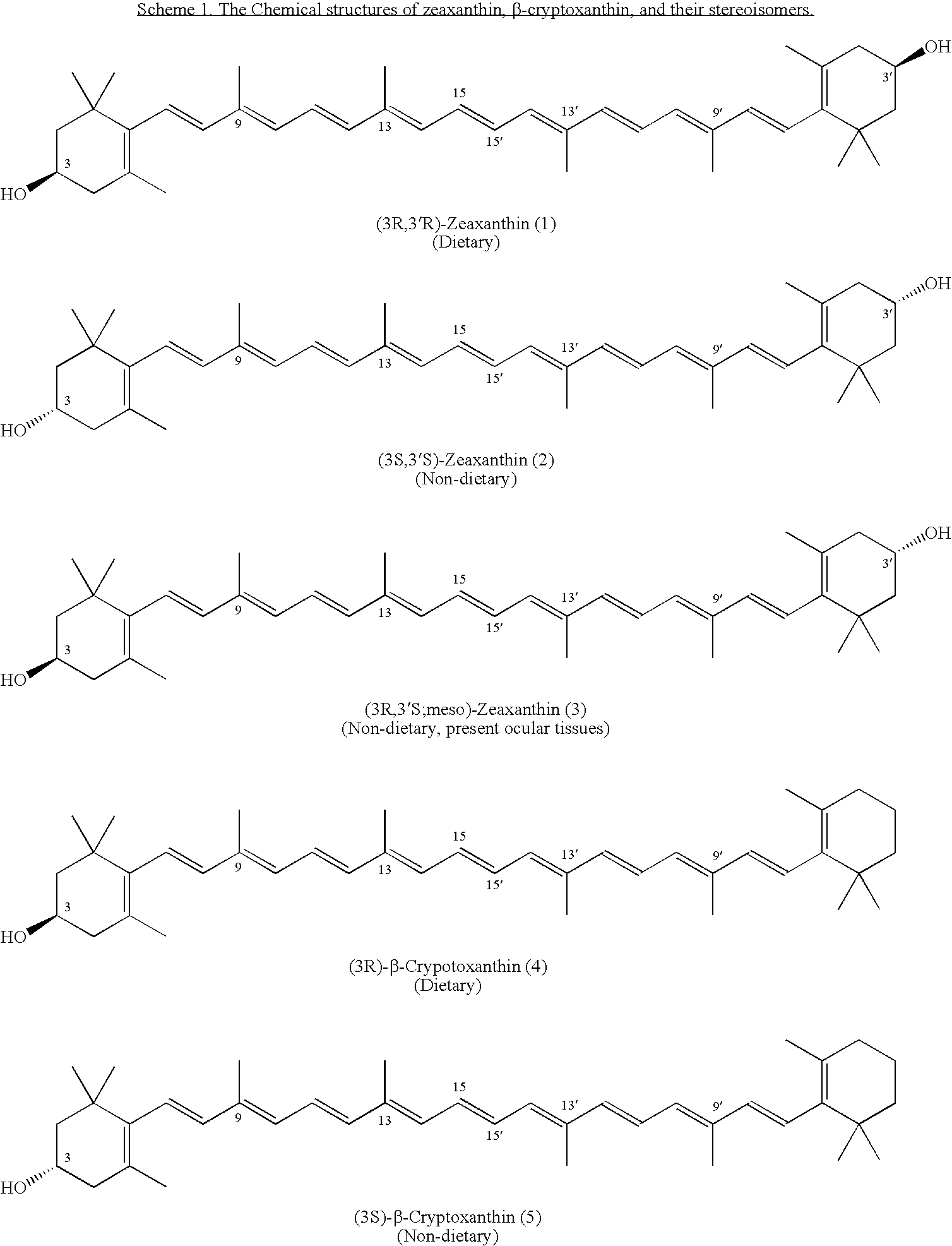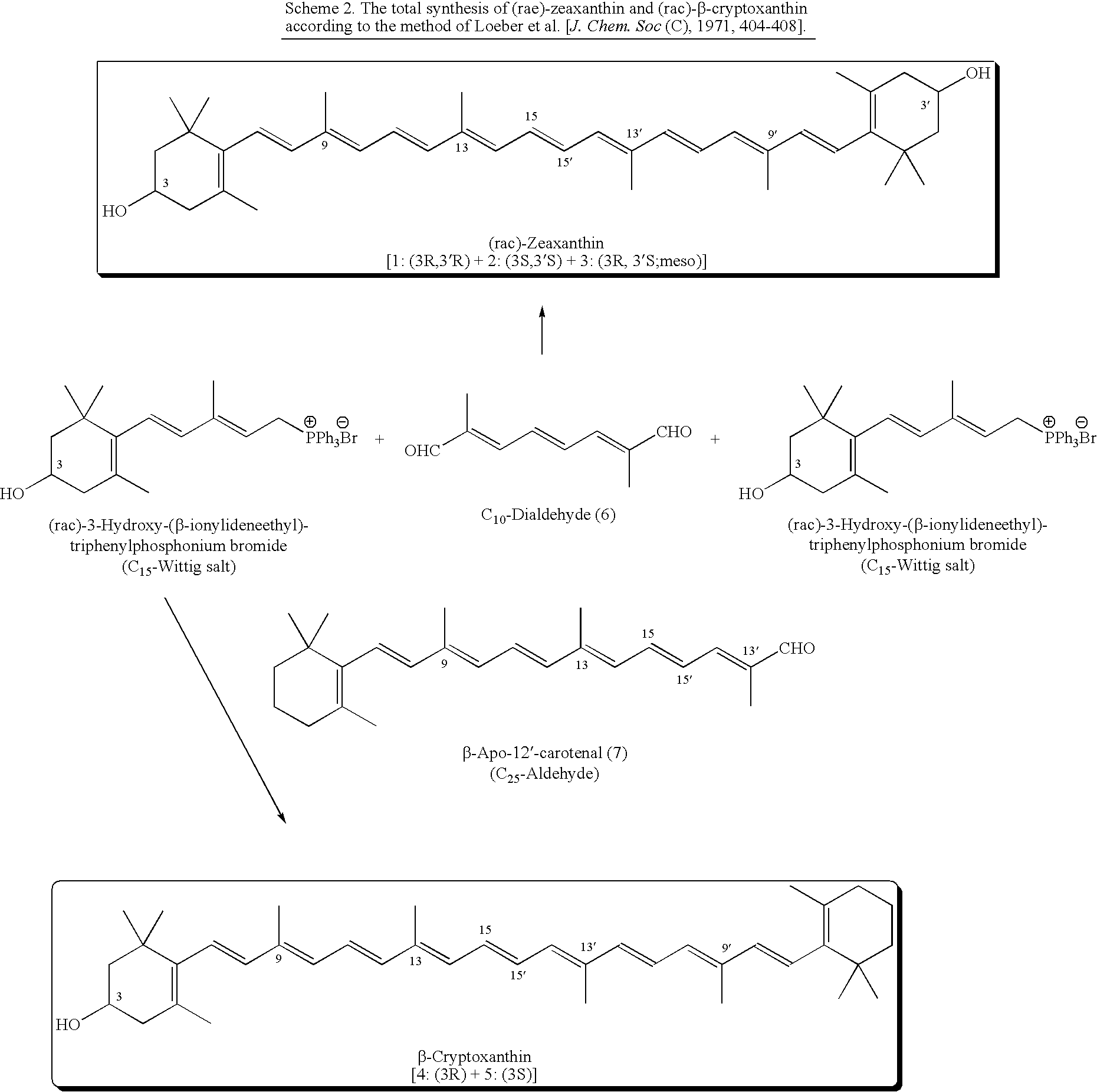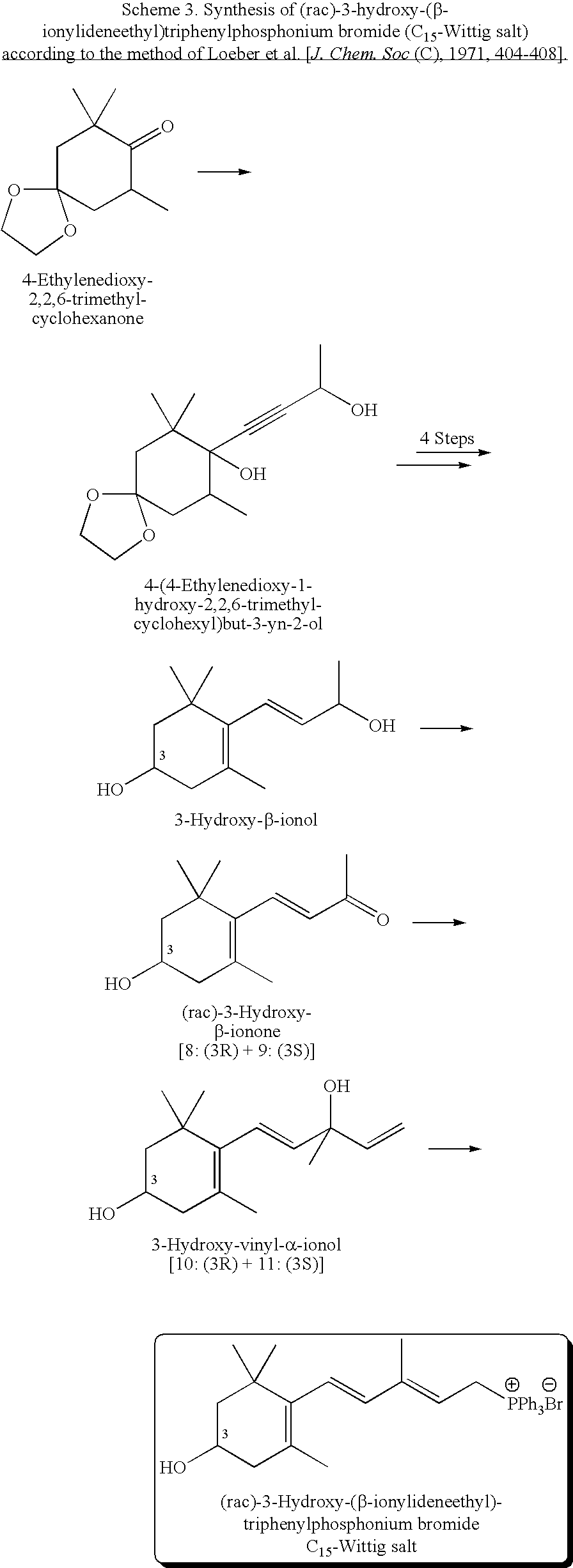Process for Synthesis of (3S)- and (3R)-3-Hydroxy-Beta-Ionone, and Their Transformation to Zeaxanthin and Beta-Cryptoxanthin
a technology of beta ionone and process, applied in the field of organic chemistry, can solve the problems of lack of synthesis of 3s)-isomer by a relatively straightforward process and lack of optically active 3s)-isomer
- Summary
- Abstract
- Description
- Claims
- Application Information
AI Technical Summary
Benefits of technology
Problems solved by technology
Method used
Image
Examples
example 1
Preparation of (rac)-α-Ionone Ketal (18)
[0040]Freshly distilled (rac)-α-ionone (23.5 g, 110 mmol) was transferred into a 250 mL three necked flask with 10 mL hexane and was treated with ethylene glycol (18 mL, 323 mmol) and trimethylorthoformate (14 mL, 128 mmol). p-Toluenesulfonic acid (285 mg, 1.5 mmol) was added and the mixture was stirred at R.T. under nitrogen overnight. The progress of the reaction was monitored by NMR. The product was partitioned between water and hexane, and the organic layer was washed water (3×300 mL), dried over Na2SO4, and evaporated to dryness to yield a 29.7 g pale yellow oil. The product was identified by NMR as (rac)-α-Ionone Ketal (18) and was used in the next step without purification.
example 2
Oxidation of (rac)-α-Ionone Ketal (18) to (rac)-3-Keto-α-Ionone Ketal (17)
[0041](rac)-α-Ionone ketal (29.7 g, from example 1) was transferred into a 1 L three-necked flask using acetonitrile (105 mL, 82.53 g, 2.0 mol). K2CO3 (1.8 g, 13 mmol) was added and the mixture was cooled down in an ice-salt bath to 0° C. under N2. A 70% solution of TBHP in water (108 mL, 97.2 g 70% ≈68.0 g, 0.755 mol) was added dropwise to the mixture under N2 at 0° C. in 30 min. Household bleach containing 5.25% NaOCl (356 g, 18.7 g NaOCl, 0.251 mol) was then added over a period of 8 h at −5 to 0° C. After the addition was completed, the reaction mixture was stirred at 0° C. for an additional hour. The product was treated with 2 g NaHCO3 at 0° C. and then extracted with hexane (2×150 mL). The combined organic layer was washed with water (3×150 mL), dried over Na2SO4, and evaporated to dryness to give 30.3 g of pale yellow oil. The crude product was purified by column chromatography (hexane:ethyl acetate, fro...
example 3
Reduction of (rac)-3-Keto-α-Ionone Ketal (17) with NaBH4
[0042]To a solution of (rac)-3-keto-α-ionone ketal (17) (16.5 g, 66 mmol) in 100 mL ethanol was added NaBH4 (3.75 g, 99 mmol) at 10° C. The mixture was kept at 10° C. and allowed to warm up to room temperature, stirred for 4 h, and the product was partitioned between water (400 mL) and ethyl acetate (150 mL). The organic layer was removed and the aqueous layer was extracted with 100 mL of ethyl acetate. The combined organic layer was washed with brine and water, dried over Na2SO4, and evaporated to dryness. The crude product (10 g) was deprotected in the following step without purification.
[0043]Deprotection of (rac)-3-hydroxy-α-ionone ketal (16). The deprotection of (rac)-3-hydroxy-α-ionone ketal (16) to (rac)-3-hydroxy-α-ionone (15) was carried out according to the following general procedure in all subsequent reduction reactions.
[0044]The crude product (10 g) was transferred into a 500 mL round bottom flask with 100 mL acet...
PUM
| Property | Measurement | Unit |
|---|---|---|
| Temperature | aaaaa | aaaaa |
| Temperature | aaaaa | aaaaa |
| Fraction | aaaaa | aaaaa |
Abstract
Description
Claims
Application Information
 Login to View More
Login to View More - R&D
- Intellectual Property
- Life Sciences
- Materials
- Tech Scout
- Unparalleled Data Quality
- Higher Quality Content
- 60% Fewer Hallucinations
Browse by: Latest US Patents, China's latest patents, Technical Efficacy Thesaurus, Application Domain, Technology Topic, Popular Technical Reports.
© 2025 PatSnap. All rights reserved.Legal|Privacy policy|Modern Slavery Act Transparency Statement|Sitemap|About US| Contact US: help@patsnap.com



